Abstract
The effect of infantile nutritional levels on adipose tissue cellularity and metabolism was studied in two groups of Sprague-Dawley rats. Caloric intake was varied during the suckling period by manipulating litter size immediately after birth; however, all animals had free access to food after weaning. The epididymal fat pads of animals raised in small litters were heavier than those of their paired siblings raised in large litters. Initially, the differences in pad weight were accounted for primarily by differences in total cell number; however, at 20 wk both cell number and cell size contributed equally. The rate of glucose incorporation into CO2 and triglyceride during in vitro incubations was the same for both groups if expressed on a per cell basis; therefore total tissue incorporation was greater in animals with more cells. The results support the hypothesis that early nutritional experiences can effect permanent changes in the cell number and size of the epididymal fat depot and that total cell number is important in the total metabolism of this organ. These findings and the fact that extreme human obesity is accompanied by similar alterations in cellularity and metabolism indicate that early nutritional experiences should be studied further as a guide to the etiology of obesity in man.
Full text
PDF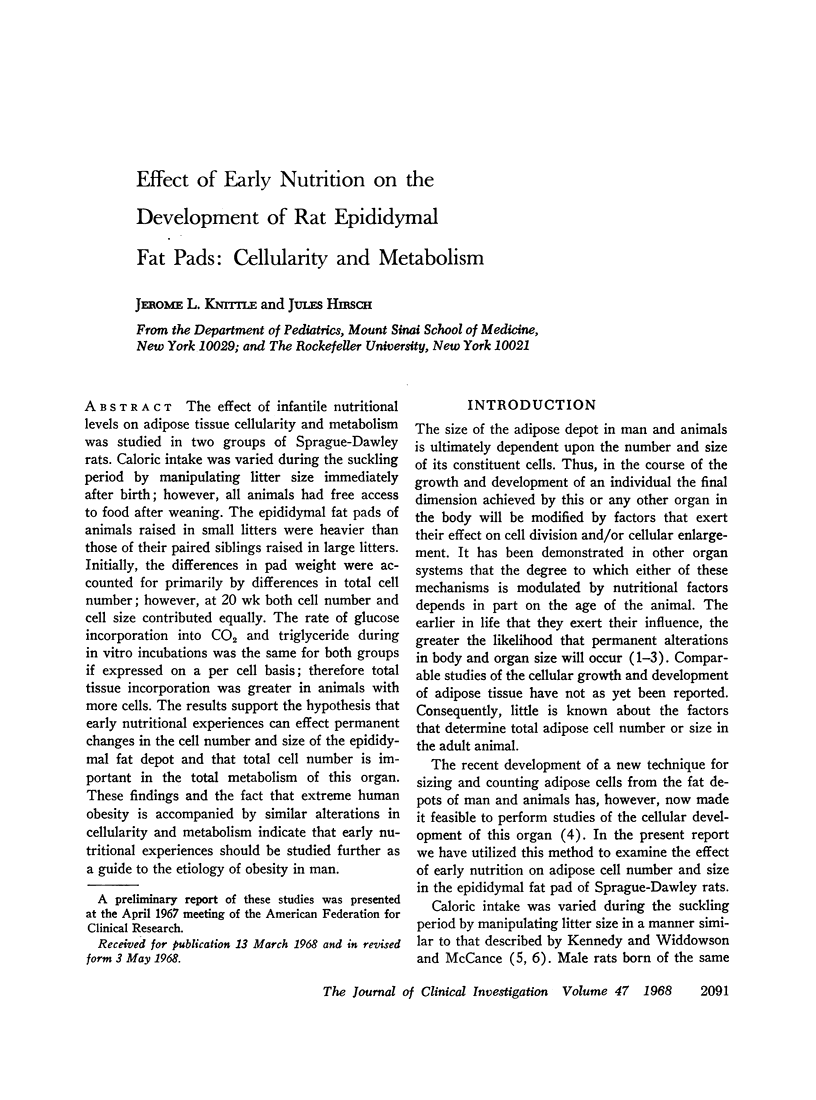

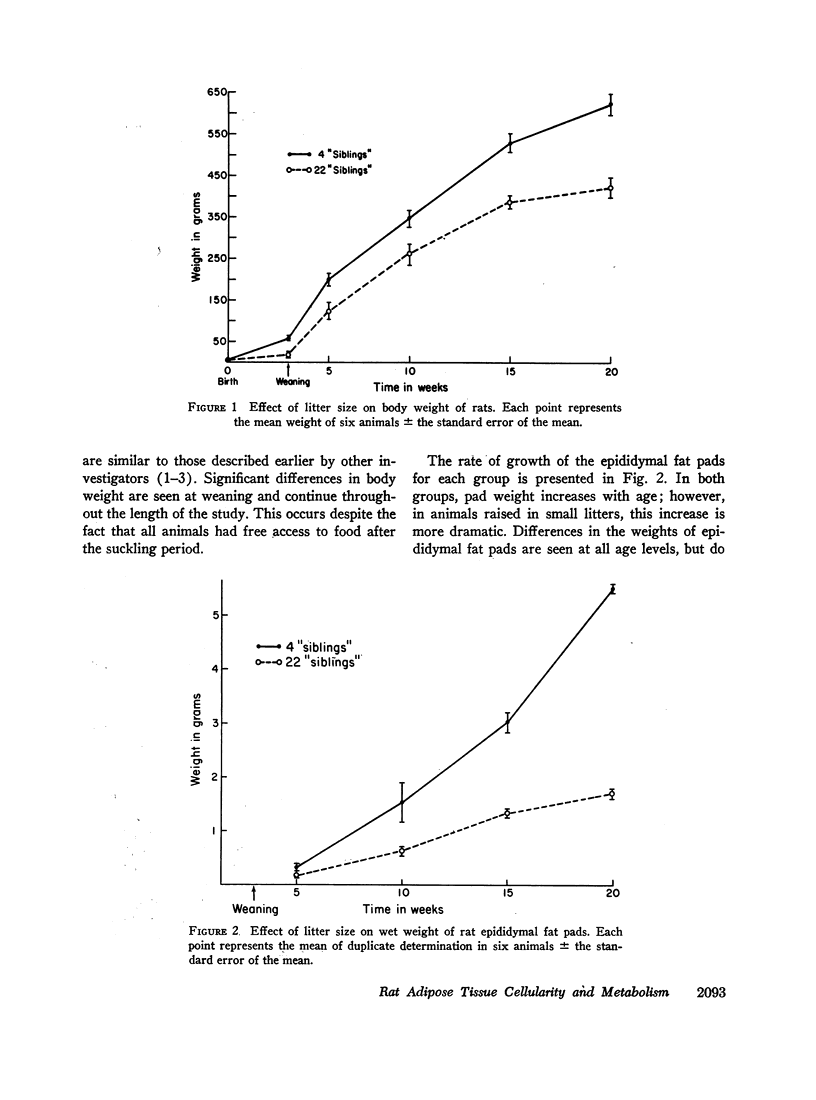
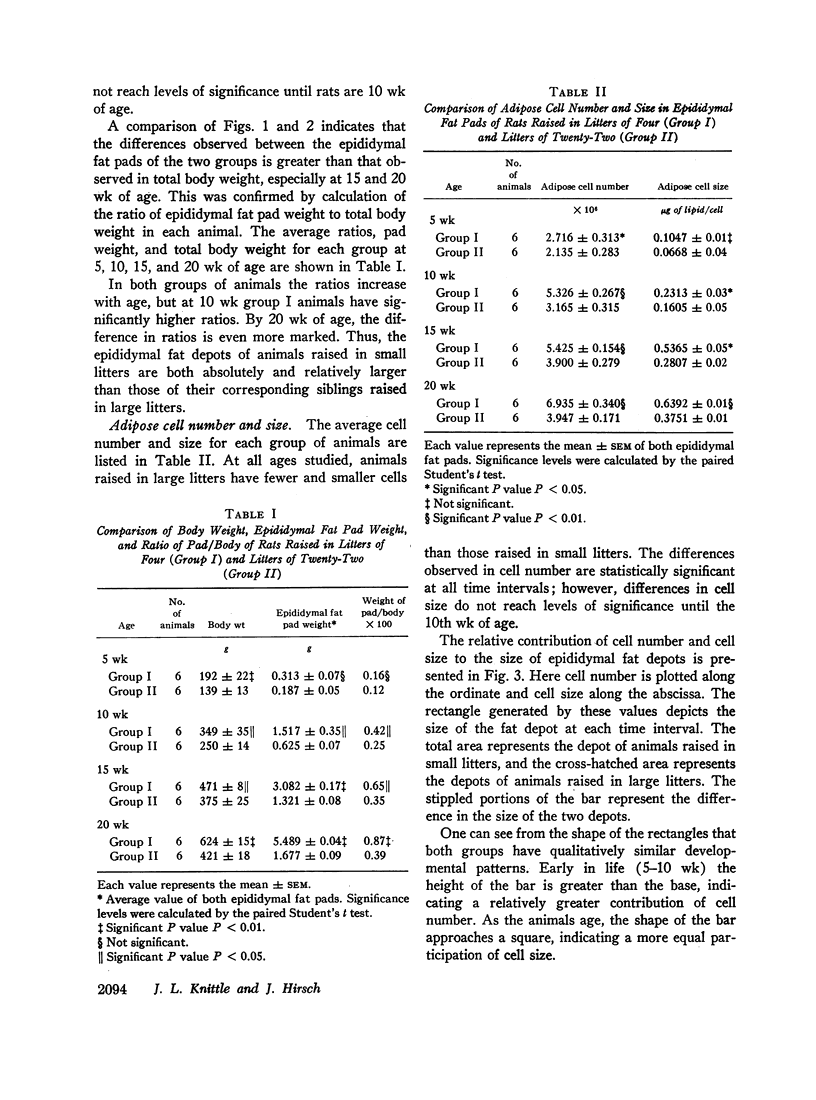
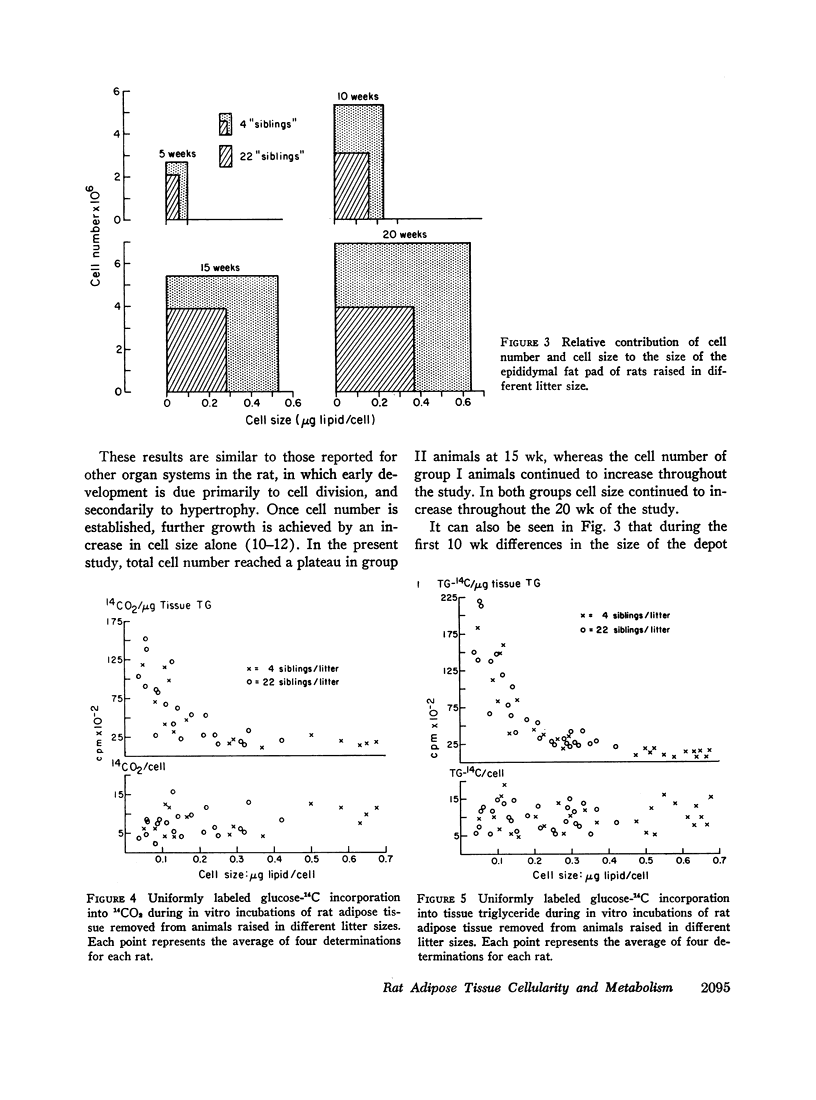
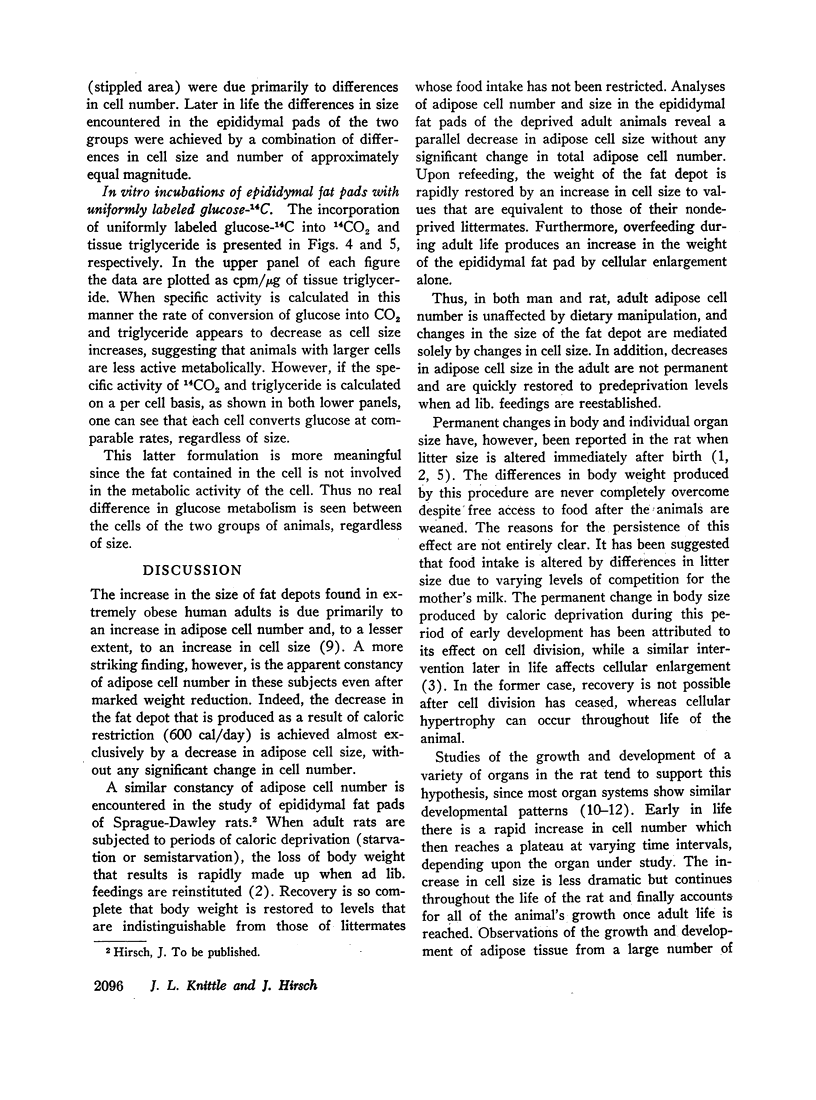
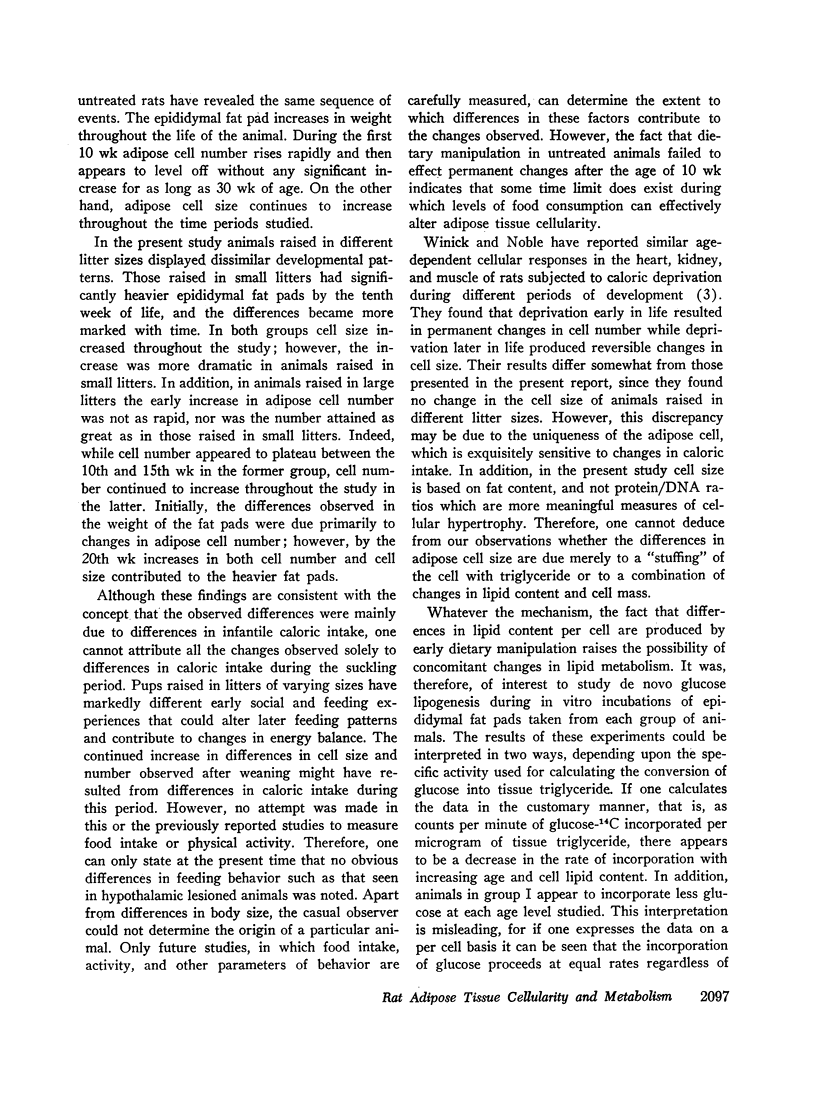
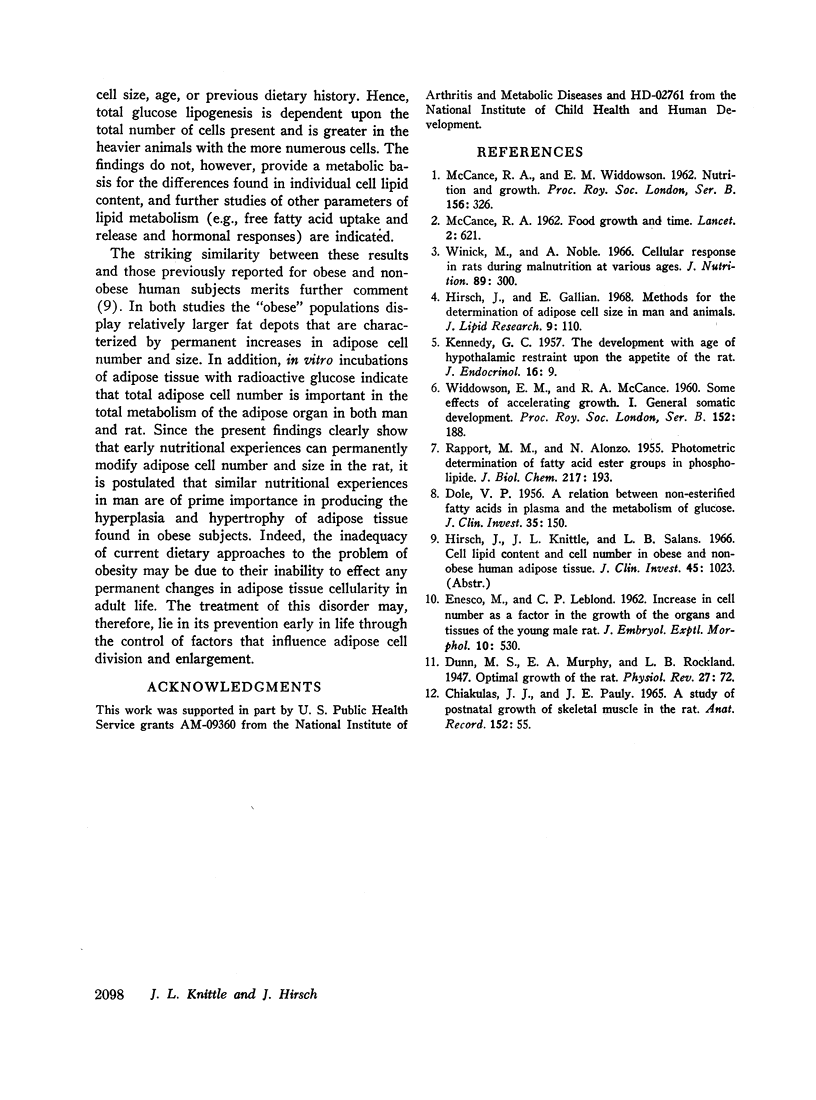
Selected References
These references are in PubMed. This may not be the complete list of references from this article.
- CHIAKULAS J. J., PAULY J. E. A STUDY OF POSTNATAL GROWTH OF SKELETAL MUSCLE IN THE RAT. Anat Rec. 1965 May;152:55–61. doi: 10.1002/ar.1091520107. [DOI] [PubMed] [Google Scholar]
- DOLE V. P. A relation between non-esterified fatty acids in plasma and the metabolism of glucose. J Clin Invest. 1956 Feb;35(2):150–154. doi: 10.1172/JCI103259. [DOI] [PMC free article] [PubMed] [Google Scholar]
- Hirsch J., Gallian E. Methods for the determination of adipose cell size in man and animals. J Lipid Res. 1968 Jan;9(1):110–119. [PubMed] [Google Scholar]
- KENNEDY G. C. The development with age of hypothalamic restraint upon the appetite of the rat. J Endocrinol. 1957 Nov;16(1):9–17. doi: 10.1677/joe.0.0160009. [DOI] [PubMed] [Google Scholar]
- MCCANCE R. A. Food, growth, and time. Lancet. 1962 Sep 29;2(7257):621–626. doi: 10.1016/s0140-6736(62)92539-4. [DOI] [PubMed] [Google Scholar]
- RAPPORT M. M., ALONZO N. Photometric determination of fatty acid ester groups in phospholipides. J Biol Chem. 1955 Nov;217(1):193–198. [PubMed] [Google Scholar]
- Winick M., Noble A. Cellular response in rats during malnutrition at various ages. J Nutr. 1966 Jul;89(3):300–306. doi: 10.1093/jn/89.3.300. [DOI] [PubMed] [Google Scholar]


